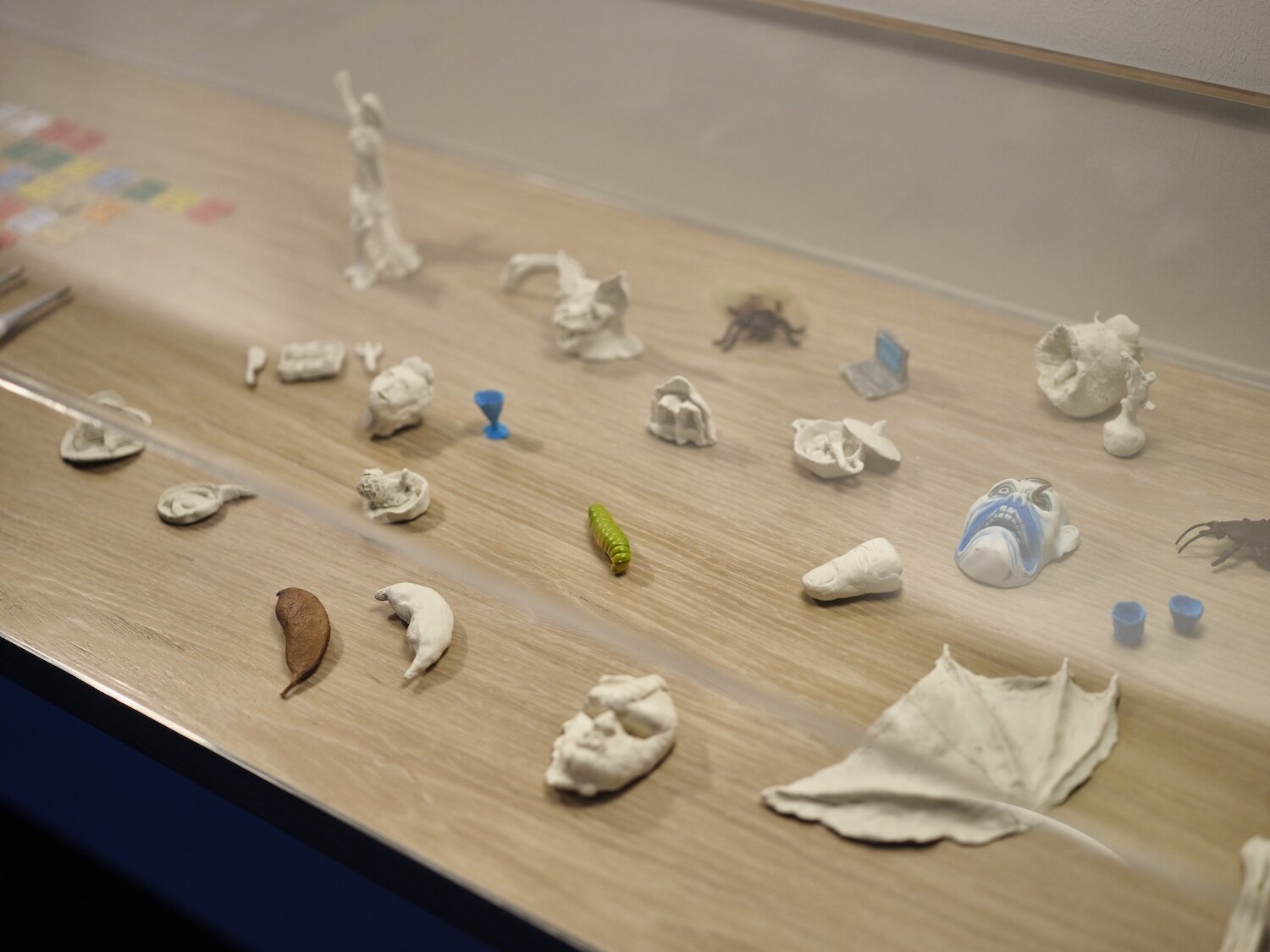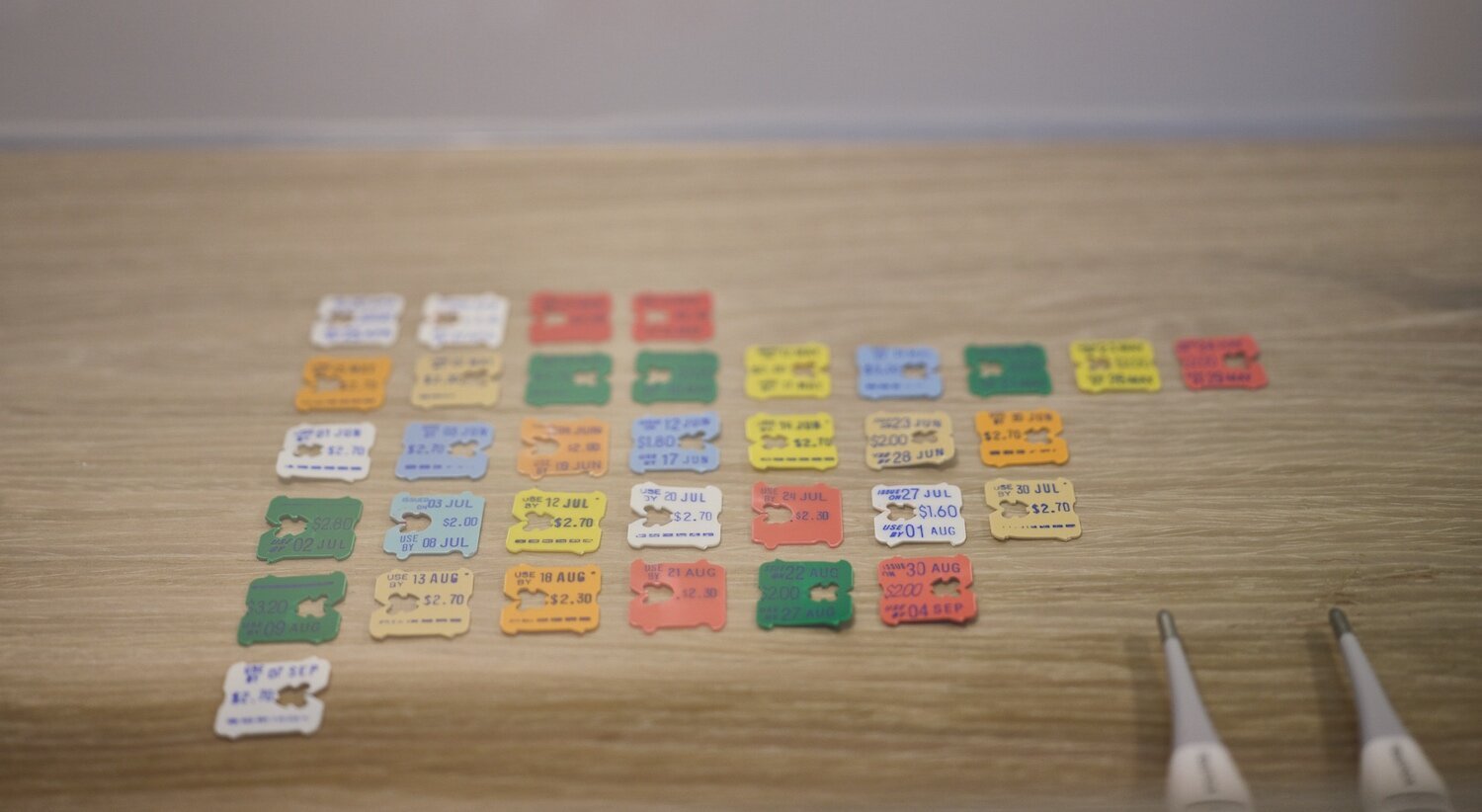Cao Fei ‘Isle of Instability’
Audemars Piguet Contemporary at West Bund Art & Design
By A&M
Cao Fei. Image courtesy of the artist and Audemars Piguet Contemporary.
Cao Fei unveils ‘Isle of Instability’ at West Bund Art & Design, which opened today in Shanghai. Commissioned by Audemars Piguet Contemporary, the work is a time capsule of her 10-month stay in Singapore with her family, away from her familiar environs back home in Beijing. Composed of videos, photographs, drawings and sculptures, their personal content connect to the collective human experience of the pandemic across the world.
Cao was first in Singapore this year when she installed her work ‘Fu Cha’ at the National Gallery Singapore in January. She then travelled to London in March to attend the opening of ‘Blueprints’, a major solo exhibition at Serpentine Galleries featuring existing and new works. This included the virtual reality work ‘The Eternal Wave’ (2020), based on her research on the history and transformation of Beijing’s ‘Hong Xia’ district where she has her home and studio. Thereafter, she returned to Singapore to reunite with her family.
While Cao has a family apartment in Singapore with her Singaporean husband, fellow artist Lim Tzay Chuen, and their two children, they would usually spend between 10 and 14 days in the city for each visit. The pandemic indefinitely extended their stay, and the family had to acclimatise to their semi-permanent living situation. “Being away from home for so long, the foreign culture became familiar, the exotic cuisine became my go-to delicacy, the labyrinth of alleys became my daily routine, the strangers next door became my friendly neighbours, and I, once a guest of this country, became a resident,” notes Cao, in a poignant reflection of how she adapted to her new circumstances. However, with the end date unknown, they were in a suspended state. She adds, “Lost in transition, certainty has become a luxury.”
‘Isle of Instability’ was not the original idea Cao had for the commission. In 2019, Cao had visited the Audemars Piguet headquarters in Le Brassus in the Swiss Jura mountains. “I was interested in documenting how the workers worked on the production of the watches, because as you know, I’m fascinated with factories,” says Cao in a conversation with Hans Ulrich Obrist, Artistic Director at Serpentine Gallery last month. The video work ‘Whose Utopia?’ (2006), for instance, is set in a lightbulb factory in China, questioning the impact of industrialisation, and suggesting how the daily work experience can be a space for creativity.
“Cao Fei is a visionary and the finished artwork is everything we hoped it would be and more. The artwork responds to what has been our shared reality for many months. It shows the difficulties we have gone through on a global scale, but also that we are resilient and united.”
Audemars Piguet Contemporary has, since 2012, commissioned artists to create new works. In a highly collaborative process, the team works with the artist, from conceptualising the work to developing it and showcasing the final work around the world, including at Art Basel and the Venice Biennale. “Working on this project has been a unique experience for all involved,” says Denis Pernet, Art Curator, Audemars Piguet Contemporary. “Cao Fei is a visionary and the finished artwork is everything we hoped it would be and more. The artwork responds to what has been our shared reality for many months. It shows the difficulties we have gone through on a global scale, but also that we are resilient and united. Her infinite curiosity for documenting has resulted in a piece that we hope will act as a testament of our time for generations to come.”
‘Isle of Instability’ (2020). Image courtesy of the artist and Audemars Piguet Contemporary.
Without the possibility of returning to Switzerland, and confined to her family apartment in Singapore during circuit breaker — or lockdown — in Singapore from April to June, Cao came up with the idea to use her lived experience for the commission. In one image, we see Qing, the artist’s nine-year-old daughter imagining herself as a sole survivor on an imaginary island, represented by a scrunched-up travel-sized sleeping bag in the living room. She is surrounded by paraphernalia that we have now become accustomed, such as bottles of hand sanitiser and disinfectant. At the same time, it alludes to the inability to travel, as she looks towards a TV screen showing a seaside at sundown, a festive orange-yellow chrysanthemum in her hair, seemingly on a holiday that cannot be taken.
In another conversation between Cao and Pernet in early October, Cao reflected upon the vast differences in her mode and realm of working because of the pandemic. She had worked with a big crew using sophisticated equipment on ‘Nova’ (2019), a two-hour sci-fi film that sees a computer scientist experimenting with turning human beings to digital mediums. From there, she went into lockdown to work on ‘Isle of Instability’ with only her iPhone, thinking it would be another brief trip out of her studio in Beijing. And while she created new worlds such as in ‘Nova’, or ‘RMB City’, a fictional Chinese city that she had built for the online virtual world ‘Second Life’ in 2009, ‘Isle of Instability’ was about her personal world, relating to her family and her memories. “I’m in, but I’m also out,” says Cao. “I’m both participant and observer, and it’s difficult to separate my roles.” Pernet likens ‘Isle of Instability’ to anthropological research, with the artist as researcher.
Drawings in ‘Isle of Instability’ (2020). Image courtesy of the artist and Audemars Piguet Contemporary.
Cao rose to the challenge and made do with what she had, establishing a rhythm within the trying circumstances, and finding joy in the process. “It’s a wonderful chance to be with my children, and to work with them on something creative together,” mused Cao. She noted that they started and stopped for a rest when they wished, or could refilm as they thought fit, which was a welcome change from her hectic pace of operating before. In general, she found the making of ‘Isle of Instability’ meditative, with the quiet acts of drawing and making miniature sculptures becoming coping mechanisms for an uncertain time.
Sculptures in ‘Isle of Instability’ (2020). Image courtesy of the artist and Audemars Piguet Contemporary.
Audemars Piguet Contemporary at West Bund Art & Design 2020. Image courtesy of the artist and Audemars Piguet Contemporary.
At the fair, the installation is made to look like a wooden house. Stepping in, there is an entrance hall that leads to the first space which looks like a gallery booth. This then opens up to the second part of the house, made to resemble a living room, marked by carpeting, wallpaper and furniture. The visual division of the public and private space is deliberate, and invites the general public to make connections between Cao’s experience of the pandemic and their own.
Bread bag clips in ‘Isle of Instability’ (2020). Image courtesy of the artist and Audemars Piguet Contemporary.
Fittingly, the room has a window that cannot be opened, referencing the quarantines that bookended the lockdown Cao went through in Singapore. A video she filmed in the hotel where she was isolated upon returning to China is projected onto this window, completing the arc of ‘Isle of Instability’. On display is also an archive of materials that she gathered, such as her plane ticket from Beijing to Singapore, to daily objects such as bread bag clips. These are both for her personal recollection and the project’s documentation, presented as they would be in a museum, once again treading the increasingly blurred lines between one’s private and public spaces for many in the pandemic.
“During lockdown, I wandered between familiarity and strangeness, between homesickness and dispersal, between wonderland and desperation. I wanted to confront these contrasting emotions and respond to the urgency of our living conditions in this project, but also to give hope to people who need it.”
The universality of ‘Isle of Instability’ is anchored in the emotional states that it deftly captures — “fear, love, hope, sadness, hopelessness”, in Cao’s words — allowing the audience to reflect on their own experiences in lockdown, and how they are navigating their feelings about their own struggles. “I believe that art has the capacity to heal, sooth and promote optimism in times of difficulty,” says Cao. “During lockdown, I wandered between familiarity and strangeness, between homesickness and dispersal, between wonderland and desperation. I wanted to confront these contrasting emotions and respond to the urgency of our living conditions in this project, but also to give hope to people who need it.” ‘Isle of Instability’ is a timely reminder of both the resilience of the human spirit, and the power of imagination.
Please click here for more information about Cao Fei’s ‘Isle of Instability’, commissioned by Audemars Piguet Contemporary.



















